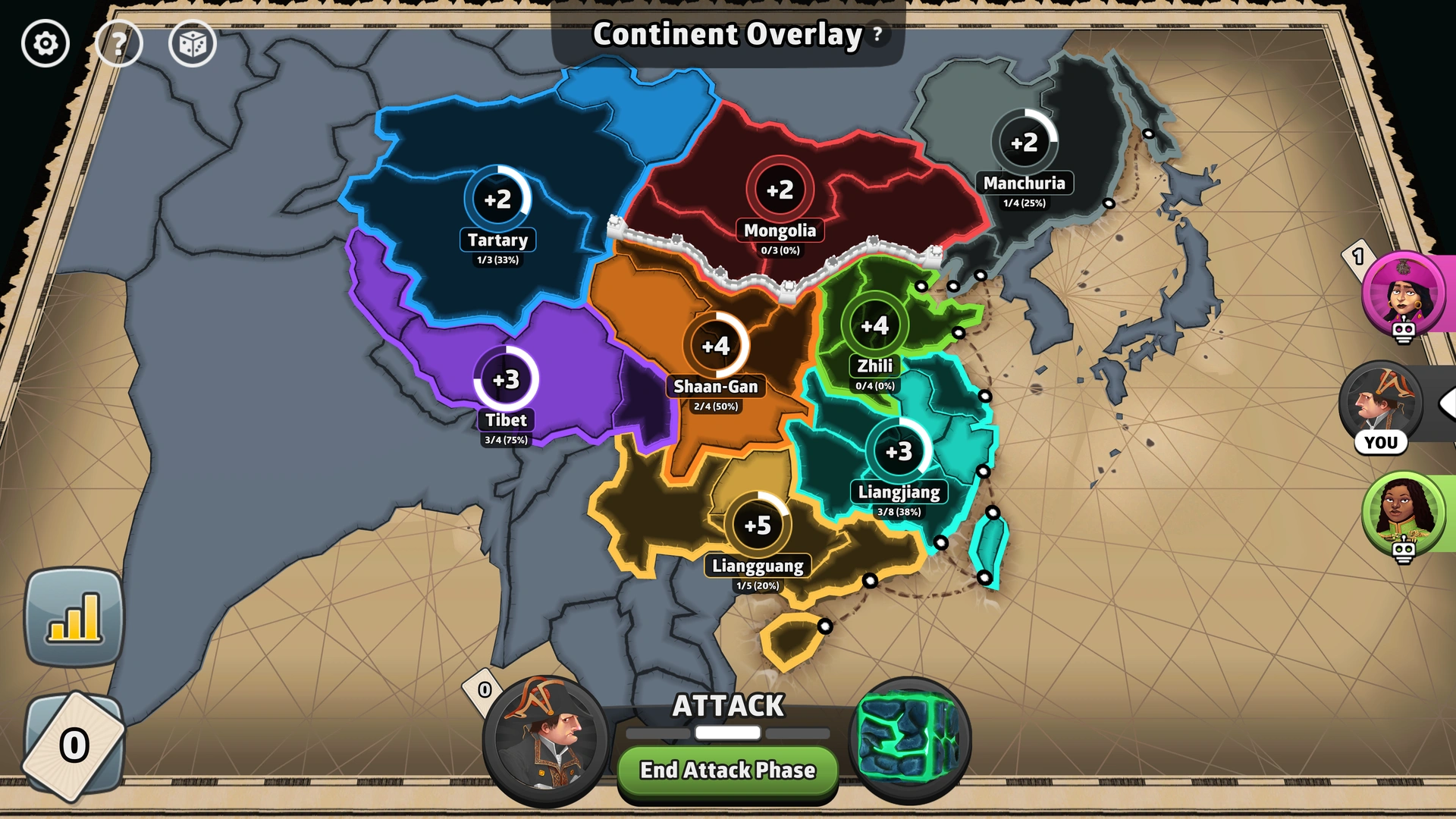Qing Dynasty Map Guide#
Step into the historical realm of the Qing Dynasty, where players are challenged to unite and defend the Chinese empire. This small-sized map offers a unique battlefield, emphasizing strategic use of the Great Wall to gain defensive advantages.
At-a-Glance Stats#
| Qing Dynasty Map | |
|---|---|
| Pack Name | Empires |
| Size | Small |
| Zones | 35 |
| Regions | 8 |
| Blizzards | 2 |
| Portals | 4 |
| Popularity | 3,500 |
| Official Description | Unite and defend the Chinese empire, use the wall to your advantage! |
Qing Dynasty Map#
Regions & Bonuses#
The map divides the Qing Dynasty into 8 major regions (continents), each offering distinct strategic advantages:
| Region | Bonus |
|---|---|
| Manchuria | 🟢 + 2 |
| Mongolia | 🟢 + 2 |
| Tartary | 🟢 + 2 |
| Liangjiang | 🔵 + 3 |
| Tibet | 🔵 + 3 |
| Shaan-Gan | 🟠 + 4 |
| Zhili | 🟠 + 4 |
| Liangguang | 🔴 + 5 |
Popularity#
This chart compares the popularity of the Qing Dynasty Map (with 3,500 likes) against the average popularity across all maps (with 22,316 likes). Qing Dynasty is 84.3% less popular than the average map.
Attacking Over a Wall#
The Qing Dynasty map is the only Risk map to feature a unique mechanic: walls. When you attack a territory over a wall, the defending player receives a +1 maximum defender die, meaning they may roll up to three dice even if they only have one troop.
This mechanic stacks with Capitals mode, allowing up to four defender dice if you're attacking a capital over a wall.
Strategic Implications#
- Avoid attacking over walls when possible — even a small defending stack becomes dangerous.
- Use the wall for defense — positioning your troops behind the wall can create a natural choke point.
- Check attack direction — the wall effect only triggers when attacking over the wall, not in both directions.
Example:#
If you're attacking from a territory south of the wall into a northern territory (across the Great Wall), the defender will roll an extra die. Defending from the north? You're safe.
This small mechanic can swing the outcome of fights and should always be factored into your positioning and pathing plans.
